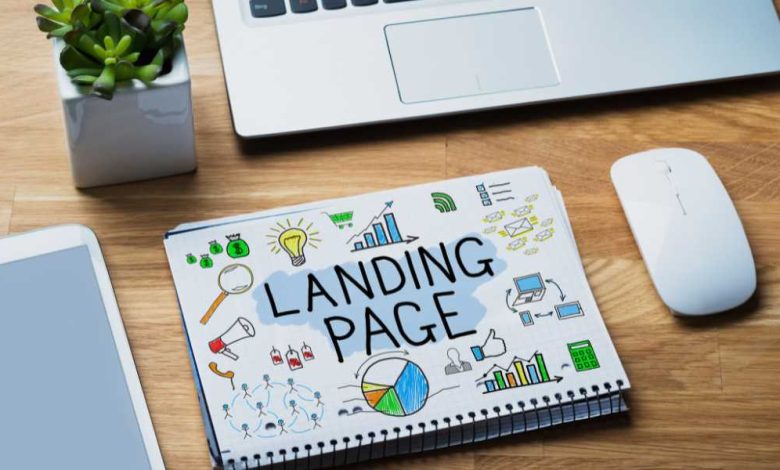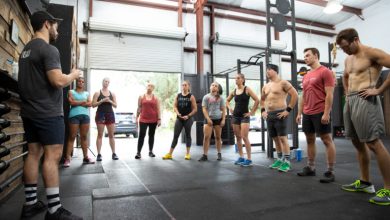Boosting Conversion Rates with Landing Page Design & Optimization
Boosting Conversion Rates with Landing Page Design & Optimization

In the fast-paced world of digital marketing, your landing page serves as the gateway to driving conversions. A well-designed, optimized landing page can make the difference between a visitor leaving your site within seconds or taking the desired action, whether it’s making a purchase, signing up for a newsletter, or downloading an eBook. This article will explore how to boost your conversion rates through effective landing page design and optimization strategies.
Why Landing Pages Matter
Landing Page Design & Optimization are often the first point of interaction between a potential customer and your brand. Unlike other pages on your website, landing pages are created with one specific goal in mind: conversion. Whether you’re running a paid advertising campaign or an email marketing campaign, the ultimate aim is to lead your target audience to a landing page and encourage them to take action.
A well-optimized landing page improves user experience, builds trust, and maximizes your return on investment (ROI). Let’s dive into the most effective ways to boost conversion rates with landing page design and optimization.
Understanding Conversion Rates
Before optimizing your landing page, it’s important to understand what conversion rates are. In simple terms, the conversion rate is the percentage of visitors who complete the desired action on a landing page, such as filling out a form or making a purchase.
How to Calculate Conversion Rates:
To calculate your conversion rate, use the following formula:
Conversion Rate = (Number of Conversions / Total Visitors) × 100
For instance, if your landing page has 1,000 visitors and 100 of them make a purchase, your conversion rate is 10%.
Improving your conversion rates means getting more value from your existing traffic, which ultimately leads to better profitability. Now, let’s discuss how design and optimization play a crucial role in enhancing your conversion rates.
Key Elements of Landing Page Design to Boost Conversion Rates
1. Clear and Compelling Headlines
Your headline is the first thing visitors see when they land on your page. It needs to grab attention and clearly communicate the value of your offering. A poorly crafted headline can confuse or overwhelm visitors, leading them to leave the page without taking action.
- Best Practice: Ensure your headline is concise, impactful, and aligned with the message of your campaign. Incorporate power words that evoke emotion or curiosity, and make sure the headline is relevant to the ad or link that brought the user to your landing page.
2. Strong Call-to-Action (CTA)
A call-to-action (CTA) is the most critical element of any landing page. It’s the prompt that tells visitors what action to take next. Whether it’s “Buy Now,” “Sign Up,” or “Download the Guide,” your CTA needs to be bold and easy to find.
- Best Practice: Use action-oriented words and make sure your CTA stands out visually. Placing the CTA above the fold (before scrolling) ensures it’s visible immediately, while using contrasting colors makes it stand out from the rest of the page.
3. Visual Hierarchy and Layout
The layout of your landing page should guide visitors smoothly toward the conversion goal. A clean and organized page structure makes it easier for users to absorb information and move through the page intuitively.
- Best Practice: Use ample white space, bullet points, and short paragraphs to make your content digestible. Keep important information, such as key benefits or features, above the fold so users can easily find it without scrolling. Highlight the most important elements—such as your CTA—by making them larger or using contrasting colors.
4. Engaging Visuals and Multimedia
Images, videos, and other forms of multimedia can significantly boost engagement and enhance your landing page’s ability to convert visitors. People process visual information faster than text, so using high-quality images or videos that convey your message can improve user experience and build trust.
- Best Practice: Use relevant images or videos that complement your offer. If you’re promoting a product, include photos or a demo video that showcases it in use. For service-based offerings, testimonials or case study videos can build credibility.
5. Mobile-Responsive Design
With an increasing number of users accessing websites via mobile devices, ensuring that your landing page is mobile-friendly is crucial for conversions. A page that doesn’t load properly or is difficult to navigate on a smartphone will likely lead to high bounce rates.
- Best Practice: Optimize your landing page for mobile users by using a responsive design that adapts to various screen sizes. Ensure your CTA buttons are large enough to be clicked easily on mobile, and simplify forms for a better mobile user experience.
Optimization Techniques to Improve Conversion Rates
1. A/B Testing
A/B testing, or split testing, is one of the most effective ways to optimize your landing page. By testing two or more versions of your page (with variations in headlines, CTAs, layouts, etc.), you can determine which elements lead to higher conversion rates.
- Best Practice: Test one element at a time to isolate the factors contributing to increased conversions. For instance, you could test two different CTA phrases or try different images to see which performs better. Analyze the results and implement the changes that drive higher conversions.
2. Loading Speed Optimization
Page speed plays a major role in landing page performance. A page that takes too long to load will cause users to abandon it before they even have a chance to engage.
- Best Practice: Optimize your landing page for faster loading times by compressing images, minimizing redirects, and using a fast web hosting service. Use tools like Google PageSpeed Insights to monitor and improve your page’s speed.
3. Trust Signals and Social Proof
People are more likely to take action when they feel confident in your brand. Including trust signals—such as customer testimonials, security badges, or industry certifications—can reassure visitors that they are making a safe decision by engaging with your page.
- Best Practice: Add testimonials or reviews from satisfied customers, along with any relevant awards or accreditations. Displaying logos of well-known companies you’ve worked with can further build trust and boost conversions.
4. Personalization and Dynamic Content
Personalizing the landing page experience for each visitor can have a huge impact on conversion rates. Dynamic content allows you to customize the messaging based on visitor behavior, location, or past interactions with your brand.
- Best Practice: Use tools that allow you to personalize landing page content, such as showing different messages to new versus returning visitors. Tailoring the content based on the source (e.g., social media or email campaigns) can also create a more targeted experience.
5. Simplified Forms
If your landing page includes a form for lead generation, keeping it simple is key to boosting conversions. Visitors are less likely to fill out a long, complicated form.
- Best Practice: Ask only for the most essential information and reduce the number of fields in your form. Consider using autofill options or enabling social logins to further simplify the process for users.
Tracking and Analyzing Conversion Metrics
Once you’ve implemented design and optimization strategies, it’s essential to track key metrics to measure the performance of your landing page. Metrics like bounce rate, average time on page, and, of course, conversion rate will help you understand how effective your landing page is at driving action.
Tools for Tracking Landing Page Performance:
- Google Analytics: Offers insights into user behavior, traffic sources, and conversion tracking.
- Heatmaps: Tools like Hotjar or Crazy Egg provide visual data on where users click and scroll on your page.
- Conversion Rate Optimization (CRO) Tools: Platforms like Optimizely and Unbounce offer detailed data on how users engage with your landing page and help you run A/B tests.
Conclusion
Boosting your conversion rates through landing page design and optimization is not a one-size-fits-all approach. It requires testing, analysis, and constant refinement to find the strategies that resonate most with your audience. By focusing on essential elements like a compelling headline, clear CTA, optimized loading speeds, and personalized content, you can create landing pages that drive real results. Keep monitoring performance, and continue to optimize for maximum conversions, turning visitors into customers and improving your ROI.









